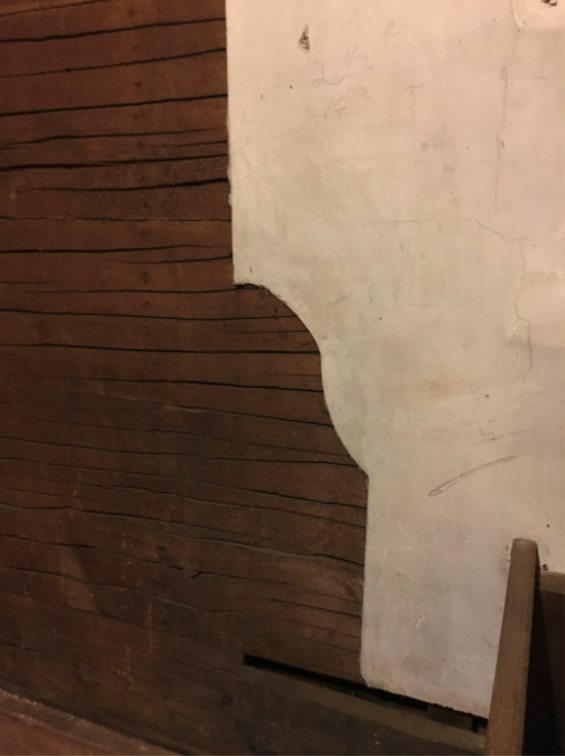His Lone Seat: Segregated Seating in the Congregational Society
“...and to build a suitable place in the belfry, of three or more seats, for the people of Colour to sit.” -Thomas Eaton
This research was compiled by Claudia Sayre and Ted Trainer, with thanks to Lara Campbell, Jim Thompson, and Kathy Ostrander Roberts
From the colonial era through 1831, Black and white parishioners in Kennebunk worshiped under the same roof at the Congregational Church. Peeling back physical layers of architecture has allowed us to learn about its segregated history.
The church, founded as the congregational meeting house in 1750 and moved to its present site in 1773, reflected the rigid social order of its time. Massachusetts law (then including Maine) required church attendance and taxation, and pews were rented according to social hierarchy determined by wealth, status, age, gender, and race. Waldo Emerson, for example, paid £30 a year for a prime pew, the same value in his estate inventory assigned to Phillis, the woman he enslaved.
“The slaves in church were seated by themselves. They were generally kept apart from the white men, in their joys, their sorrows, their sympathies and their worship. On the eastern end of the old meeting-house was a large porch two stories high. There, in the upper story, nearly all of them used to sit during services. The churches generally in those days had similar accommodations for the negroes, although some few [slaves] were in the habit of sitting on the step of [their enslaver’s] pew door.”
Under this system, enslaved and free Black people were relegated to the least desirable seats, in the rear balcony. They could attend services but were not considered church members. When the church was expanded in 1803, architect Thomas Eaton was asked to add seats for free Black worshippers in the new bell tower—what Eaton referred to as “Negro seats.”
In The History of Wells and Kennebunk (published in 1875), historian Edward E. Bourne only describes one free Black person who used these seats: Tom Bassett, “separate from his fellow men in his lone seat.” After Tom’s death in 1831, records suggest the space may have gone unused until an organ was installed there around 1871.
Reflection Questions
Why might archival information about Black and Indigenous parishioners in the 18th and 19th centuries be so limited?
Consider the founding of the Abyssinian Congregational Church, a meeting house built by free Blacks in Portland in 1835. Why might records of Black parishioners in the alcove disappear after 1831?
Peeling Back The Layers
The wood plaster pictures are of the space where the "Negro bench" was located, now hidden behind the organ. What you can see in each image is the shadow of where the arms of the bench were located. The plaster was placed on the wall around the bench. It was this odd 'shadow' that prompted the initial questions about what had been in that space, and eventually led to the research that uncovered the existence of the rumored "Negro bench."
- Gregory Smith
This research was compiled as part of the Just History Walk: Lives Between Two Rivers which took place on November 8, 2025. For more information about this walk, click here. For more research related to this area, click on the tags below. To download a hi-res version of the poster below for educational use, please contact where@atlanticblackbox.com.
Poster design by Meadow Dibble


